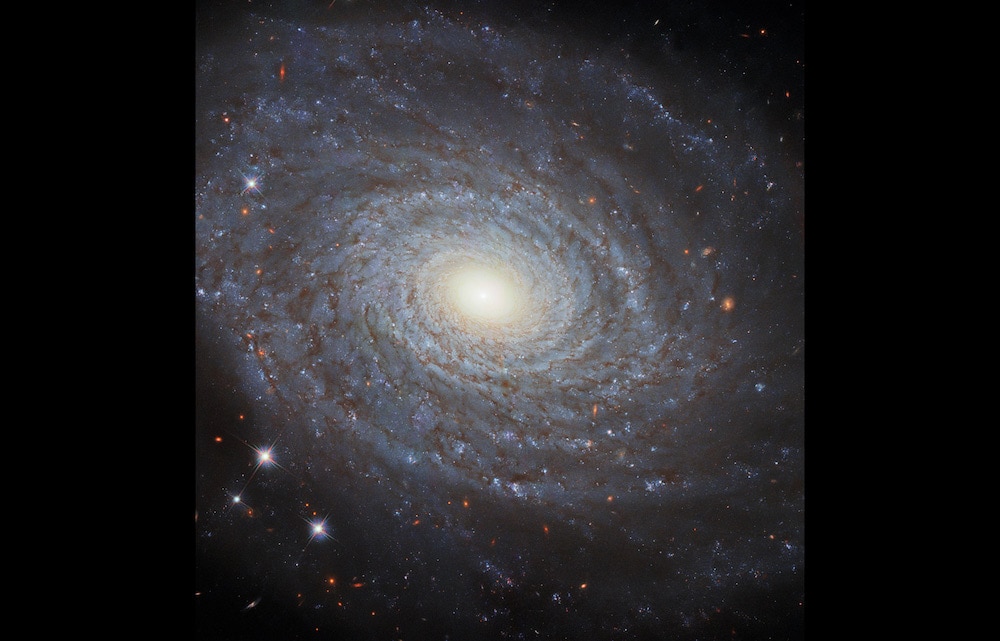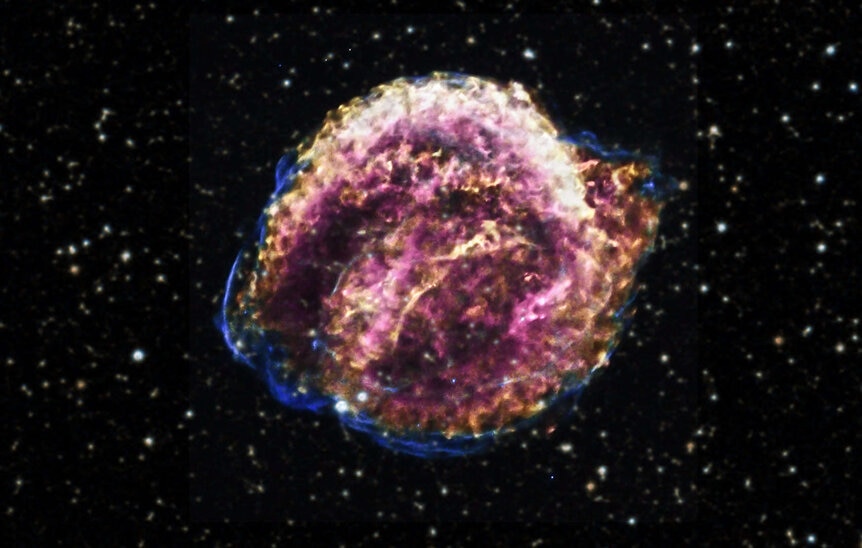Create a free profile to get unlimited access to exclusive videos, sweepstakes, and more!
At year's end, a spectacular spiral galaxy reminder that science improves upon itself
NGC 691 and the search for understanding in the Universe.

We understand something about the Universe.
I know that sounds mundane, but it is truly one of the most profound statements we can make. A rock knows nothing of the cosmos, and while many species on this planet are intelligent and aware of both their surroundings and themselves, I think it's safe to say that they don't ponder the greater Universe around them.
But we do.
And we know a lot about it. In broad terms we know how stars form, and how they die, and what they do in between. We know that planets form around those stars, and have a decent grasp of how that works. We know that moons form around planets, and all these comes from nebulae, and that those nebulae have gas and dust in them. And all of these things tend to happen in galaxies.
Ah, yes, galaxies. These immense stellar cities are one of the fundamental building blocks of structure in the Universe; made up of all those things above and more.
And when we look at ones that are relatively nearby — like one about 120 million light years away — we see quite a spectacle.
WOW. NGC 691 is a spiral galaxy, a flat disk where the stars, gas, and dust have formed a gorgeous pinwheel pattern. It has a redder nucleus made up of older stars, and the arms are blue since that's where star formation goes on, and massive stars are blue and bright. Far more red stars are born there, but are so faint we don't see them as easily.
All this is quite normal for a spiral galaxy. What makes NGC 691 special, and worthy of observing with precious time on Hubble Space Telescope, is that in 2005 the light from an exploding star reached us. Called SN 2005W, it was what we call a Type Ia supernova, and that is special. As far as we know, these kinds of explosions all release about the same amount of energy over time (if you correct for some variables). That means their distance can be gauged from how bright they get.
But we can also measure the distance to the galaxy using its redshift. In the 1990s, two teams of astronomers used these two methods to discover that consistently, the supernovae were dimmer than their host galaxy's redshift distance would indicate. This implied they were farther away than the simple redshift measured, and this in turn meant that the expansion of the Universe was accelerating.
And that is how we discovered dark energy.
But this acceleration is very small at close distances, and only really picks up for galaxies many billions of light years away. Still, there's an issue: There are several methods used to measure how fast the Universe expands, and they don't all agree. Ones that look at “nearby” objects, out to a couple of billion light years, get one number, but ones that use extremely distant sources, like the cosmic background radiation, get a different one. This tension between the two methods is interesting, and not easily explained.
Which is why NGC 691 was observed in the first place. It's close enough that several of the distance measurements can be used, and can be compared to one another to try to tighten up those measurements. I had to laugh when I first saw the image; it was taken by my friend and colleague Adam Riess, who was on the one of the teams that discovered dark energy, and in fact he was the one who was able to correlate Type Ia supernovae and their distances.
I'll note that my chuckle on seeing his name happened after the awe and wonder on seeing this galaxy faded enough that I could read the caption. It's an absolute stunner.
But this brings me back to my point. We know a lot about the Universe, about the things in it, about the ways they behave. But we don't know everything.
Of course not! That's why science exists: To help us learn. It's a method of knowing, of figuring things out, of understanding.
We don't know how dark energy works, or what dark matter is, or exactly how Type Ia supernovae detonate, or or or. But we know they're out there, and we know some of the basics of how they work. And even though we have methods of studying them, we still go back to look at our methods and try to refine them so they help us understand better.
That's one of my favorite things about science: We can use its methodology on itself to improve our ways of understanding.
As this year closes out and we start another, I think reflecting on that is important. Science plays an outsized role in our lives every day, every minute of every day, and I think it's important that we not only take a moment to appreciate that, but also to learn more about how science itself works.
As we start a new year, I hope more people take the time to find out why science is such a wonderful way to know the Universe. We're a part of that Universe, and so knowing it is to know ourselves. Doing that better is something we can all strive to achieve.




























